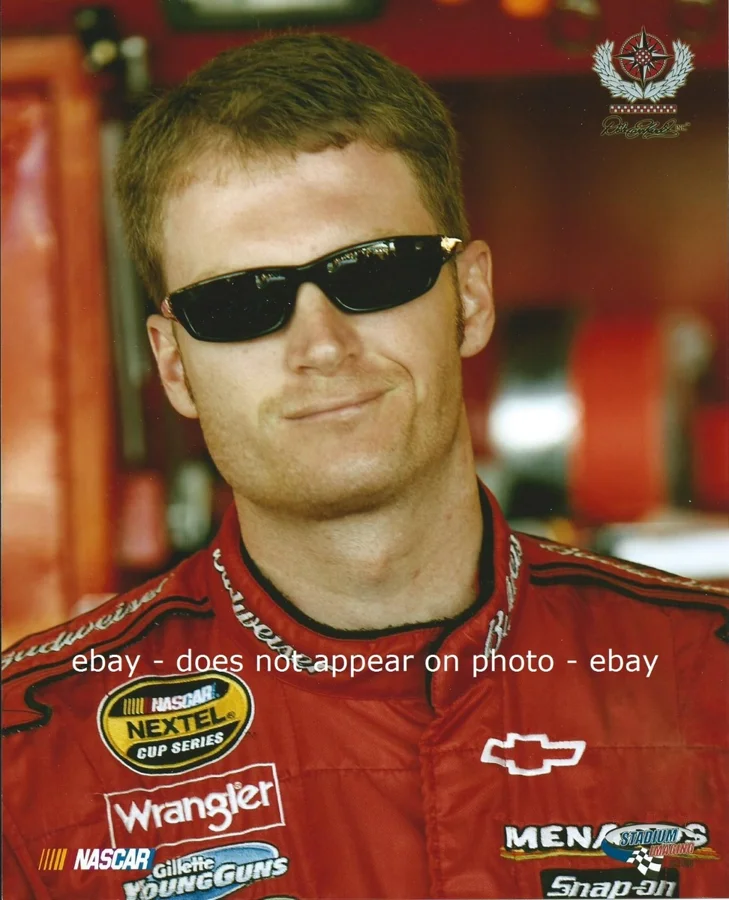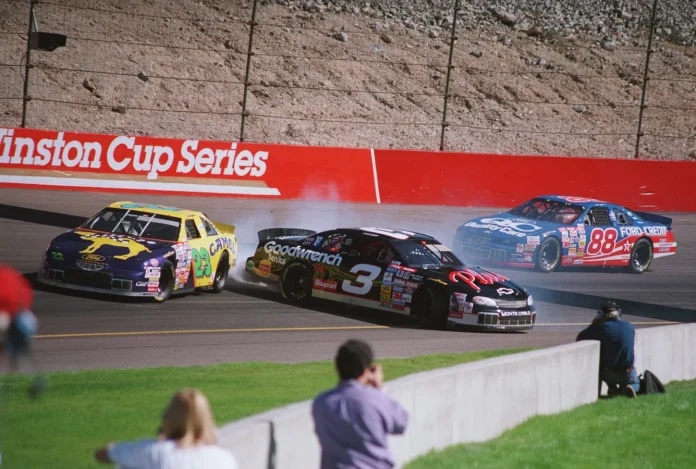Dale Earnhardt Jr. NASCAR playoffs conversations are back in the spotlight, as Earnhardt Jr. has spoken openly about the subtle but significant role that television networks play in shaping NASCAR’s playoff system. In recent committee meetings featuring insiders like Earnhardt Jr., it was revealed that major broadcasters’ financial involvement means their interests can influence, if not dictate, critical decisions about the direction of the sport.
For years, NASCAR’s playoff format has evolved, aiming to keep the racing thrilling until the final lap of the season. But with each tweak, questions arise over whether the system rewards consistency or spectacle, and who exactly is pulling the strings when changes are made. To address growing uncertainty and criticism, NASCAR established its Playoff Format Committee, a group that includes respected voices such as Dale Earnhardt Jr. This committee has begun to publicly acknowledge the weighty presence of television money and the complex, layered relationships shaping the sport’s most important contests.
The Overlooked Influence of Television Networks
Major broadcasters, including FOX and NBC, generate hundreds of millions of dollars for NASCAR through broadcasting deals. These contracts are crucial for the sport’s financial stability and visibility, transforming the networks into powerful business partners beyond just being platforms for coverage. While NASCAR’s official position is that networks do not directly shape rules or playoff formats, insiders suggest otherwise. Over the past season, the Playoff Format Committee has explored the nuances of this relationship, recognizing that the money at stake inevitably brings networks into the orbit of strategic decisions.

Dale Earnhardt Jr. recently pulled back the curtain on these meetings during an episode of his podcast. According to him, the committee’s work began as a broad discussion:
let’s talk and see what comes of it
—Dale Earnhardt Jr., Playoff Format Committee Member. Yet, the matter of television’s say in the process soon took center stage, as even the suggestion of network influence can shift the entire conversation.
Earnhardt Jr. noted that television networks are careful to deny any direct involvement in the decision-making process. Their official stance is to maintain a visible boundary so as not to appear as string-pullers. However, their significant financial commitment cannot be easily separated from the discussions. Describing the reality behind closed doors, Dale stated,
If I’m NASCAR and you wrote me that check, I’m calling you, ‘Hey man, I’ve not made a decision yet, but this is kind of where we’re headed,’
—Dale Earnhardt Jr., Playoff Format Committee Member. His words highlight an unspoken protocol: for every major change, networks are kept informed, if not actively involved, as NASCAR seeks to avoid alienating such pivotal partners.
Expanding on this point, Earnhardt Jr. made it clear on his show:
TV can say that and they can actually believe that. But if I’m NASCAR and you wrote me that check, I’m calling you,
—Dale Earnhardt Jr., Playoff Format Committee Member. In other words, even when networks publicly distance themselves, the underlying reality is far more interconnected.
This influence has real consequences outside boardrooms. It can tip the balance on whether NASCAR pursues a playoff structure that rewards consistency over drama, or vice versa, depending on what makes for better television. Dale Earnhardt Jr.’s candor provides fans and teams alike with fresh perspective on the decision-making processes often shrouded in corporate gestures and careful language.
Evolving the Playoff Format Amid Competing Interests
Every adjustment to the playoff system—whether a rules change or a renovation to scoring—represents a dance between multiple stakeholders. The conversation is not just about sport, but about business, optics, and public expectations. In the background, discussions about restoring the traditional 36-race season, sidelined for years, have resurfaced with new urgency. According to Earnhardt Jr., the Playoff Format Committee initially considered the return of a full-season points system to be almost untouchable—a suggestion not even worthy of full discussion at the start.
Public engagement, especially through social media, fan forums, and prominent podcasts, brought unexpected momentum. Well-known drivers like Mark Martin publicly argued for reinstating the old system. Their advocacy helped fuel the fan movement toward a full-season points race, bringing the idea out of the shadows. Earnhardt Jr. remembered how the sentiment shifted:
So, when we started the meetings at the beginning of the year, the mere mention of a 36-race full season points deal was really pretty taboo,
—Dale Earnhardt Jr., Playoff Format Committee Member. But persistent voices on both sides, including Mark Martin, would not let the topic die. As Earnhardt Jr. put it,
He’s been vocal both in meetings and on social media, saying that fans, young and old, want that,
—Dale Earnhardt Jr., Playoff Format Committee Member. This vocal engagement turned the full-season debate into a central concern for the committee, despite initial reservations.
With each meeting, the outlook changed. Data showed early polls favored keeping the current system, but support for the 36-race format grew as drivers and analysts pitched their opinions. Dale Earnhardt Jr. reported,
Back in February, the majority wanted a change, mostly the multiple-race final round, and very few supported the full season,
—Dale Earnhardt Jr., Playoff Format Committee Member. By the end of their discussions, the full-season option, once seen as a long shot, was being taken much more seriously—growing from what Earnhardt Jr. estimated at a meager 2% chance to around 30-40% by year’s end. Still a minority, but enough to shape the ongoing narrative.
The Tension Between Tradition and Television
At the core of this debate is a fundamental tension: keeping fans engaged through innovative playoff drama, or honoring the sport’s roots by returning to points-based consistency. Television interests often lean toward maximizing late-season excitement. High-stakes, elimination-style events tend to draw better ratings—a crucial statistic for both networks and NASCAR’s bottom line. This can push the committee to prioritize formats that drive narrative drama, even if that means straying farther from the idea of a pure, season-long sports competition.
Earnhardt Jr.’s revelations have surfaced just as this question has reached a fever pitch. His willingness to speak publicly about the machinery behind the scenes—particularly the interplay between financial partners and sport leaders—adds a layer of complexity to the discussions. Industry insiders such as Peter Casey-Imagn Images, as well as prominent fans and drivers, continue to weigh in, underscoring both the tradition and the need for innovation. As the committee weighs data, fan sentiment, and business priorities, the future of Dale Earnhardt Jr. NASCAR playoffs discussions is more uncertain—and more fascinating—than ever.
Looking Ahead: What Will Shape the Next Era in NASCAR?
The Playoff Format Committee’s work is not complete, as ideas and proposals continue to be evaluated. Television networks will likely remain deeply entwined in the fate of the postseason format, owing to their indispensable role as financial and promotional partners. Meanwhile, the push for a return to a traditional 36-race season has grown from a forbidden idea to a realistic, if still unlikely, outcome—driven in large part by vocal public interest and influential voices like Mark Martin and Dale Earnhardt Jr.
What lies ahead for NASCAR, its drivers, fans, and business associates will depend on this ongoing balancing act. Whether future Dale Earnhardt Jr. NASCAR playoffs discussions yield significant overhaul or only subtle refinement, one thing is clear: transparency, collaboration, and a willingness to grapple with complex realities will be crucial if the sport hopes to maintain credibility and excitement for generations to come.
Is a swing for the fences worth the risk? 🤷♂️📊
🎙️ From The @DaleJr Download pic.twitter.com/8P8pg2SPch
— Dirty Mo Media (@DirtyMoMedia) October 1, 2025


